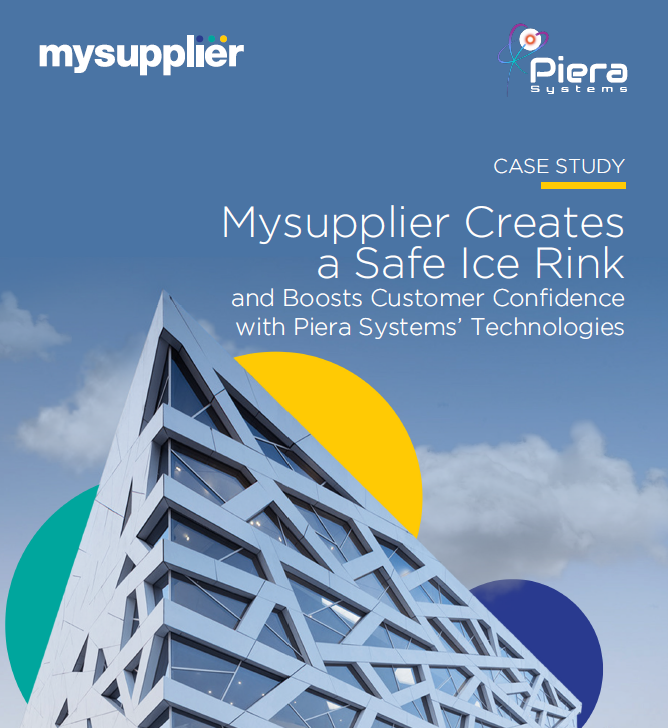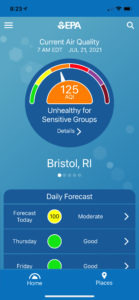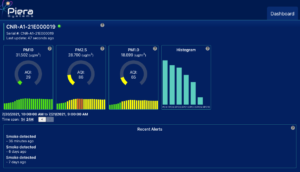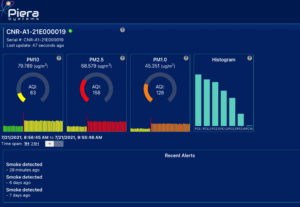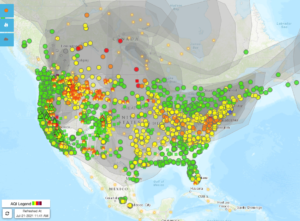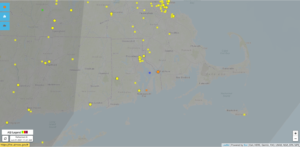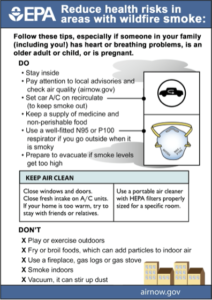Every day we learn more about the impact poor air quality has on our health, productivity, and its economic impact. Covid and climate change are tipping points for action.
Wildfires are impacting millions across the US. What can I do to mitigate these threats to my family, business, the planet? You don’t need to be an atmospheric scientist nor spend money on air purification technologies. Start with monitoring the air indoors – at your office and home. You spend 80 % of your time indoors and indoor air quality is 2-5 times worse than outdoors. Indoor air pollution is ranked as one of the EPA’s top 5 environmental risks to public health and there have been numerous studies linking indoor air quality to illness
[1]. The EPA reports only outdoor air pollution caused by coarse (PM10) and fine (PM2.5) particulate matter alongside gases. Indoor air quality is different, with sources infiltrating from outdoors but additionally from people and their activities. It’s the ‘very fine’ (PM1.0 to PM0.1) particles that are most dangerous to your health (wildfire smoke, cooking, tobacco, wood stoves, dust, vape, etc.). They are also invisible, readily absorbed into the bloodstream.
As a result of Covid-19 and its transmission in aerosol form, the EPA, CDC, DOE and WHO have released guidelines for reducing transmission by up to 50 % by; increasing the flow of ‘fresh’ (outside) air; the use of MERV-13 filtration in the HVAC system; augmenting this with air cleaning technologies which have a CADR (Clean Air Deliver Rate) sized to the room they are used in. Researchers also recommend measuring the effectiveness of these approaches through testing of particle count and size using low-cost Air Quality Monitors [2].
What if there was a low cost, real time way to monitor indoor air especially very fine particles, determine when it’s bad, identify possible sources, and take steps to improve and remove it? You could answer these questions:
- Is my Indoor Air Good ? If not, what is the source?
- Is my HVAC system making it better or worse? Do the filters need to be changed?
- Am I getting enough fresh air into the home? Is the outdoor air ‘good’?
- Are some rooms in my building ‘bad’? Is this a short-term event or longer, what could be the source?
- Do I need to buy air purification technologies to complement my HVAC system? If so, how do I know if they are effective?
At Piera Systems, our technology originally developed to detect X-Rays by counting photons has been adapted to measure and count all sizes of particulate matter and forms the brains of our Intelligent Particle Sensor (IPS) used in our Canāree Air Quality Monitors. No other sensor currently available can measure coarse, fine and very fine particles and deliver the data needed to measure the effectiveness of any mitigation. Its data can alert you to bad air events, the magnitude and duration, classify possible sources, suggest steps to mitigate, and monitor their effectiveness.
Don’t wait for the EPA, the CDC and the WHO, take action by knowing What’s in your Air?
[1] https://www.hsph.harvard.edu/c-change/?utm_source=os&utm_campaign=redirect_analysis
[2] EPA Webinar: Navigating the Landscape of Air Cleaning Tech for Covid-19, June 16, 2021

